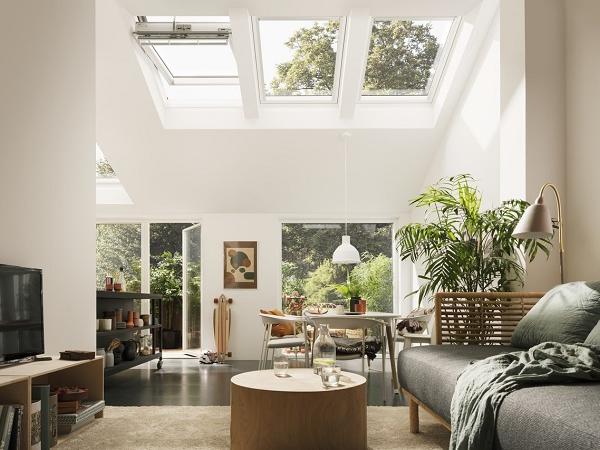
Date: 14 December 2018
In conjunction with the World Climate Summit at COP24, the World Green Building Council launches Healthier Homes, Healthier Planet guide
Today, the World Green Building Council launched a new guide to creating healthier homes that in turn, are healthier for the planet. The guide takes a combination of the latest research into air quality, thermal and acoustic comfort and lighting and translates it into simple, low-cost and practical strategies to make the home environment healthier for both people and planet. The world’s buildings have a direct impact both on the environment and on personal health and wellbeing, as well as having huge financial implications to owners and occupiers.
On average we spend 90% of our time indoors1, so the quality of the air we breathe can make a big impact on our health. More than half of the body’s air intake during a lifetime is inhaled in the home2. However, for 92% of us, the air around our homes is not safe to breathe3 and is linked to a range of health hazards.

Poor insulation and construction of buildings is often the cause of low energy efficiency and can compromise the occupant’s comfort and health. Around 65% of Europeans living in major urban areas are exposed to dangerously high levels of noise pollution4. This can lead to health issues such as stress, high blood pressure, hypertension and strokes4.
One study about living in a dark home found health worsened by 50% with headaches, insomnia and depression amongst other reported negative health impacts5. Therefore, good quality light, daylight when possible, is essential for a healthy life. Natural lighting is also an important energy reduction strategy in the home.
„Buildings and construction contribute close to 40% of global energy related carbon emissions6 causing climate change and contribute to air pollution that causes around four million deaths annually. Therefore, the industry must look at ways to make buildings and homes good for human health as well as beneficial to the environment.
Our key message is that homes and buildings across the world must be sustainable for people and planet. By publishing this guide, we hope this information will empower homeowners and occupiers to invest in a healthier home,“ said Cristina Gamboa, CEO, World Green Building Council.
The guide recommends action to making a home healthier such as:
- Ventilate your home to clear away the hidden indoor toxins and bring fresh and clean air into your home
- Invest in insulation to boost energy efficiency, thermal comfort, less noise and lower energy bills
- Maximise the use of daylight and be efficient with lighting to lower carbon emissions, reduce energy costs and unlock health benefits.
„The energy efficient cities of the future must also become healthier cities. By following the recommendations in the healthy homes guide, building occupants can play a key role in assuring that the buildings we live, work and study in do not just protect but promote our health,“ commented Vijoleta Gordeljevic, Health and Climate Change Coordinator, Health and Environment Alliance.

„This guide makes an important contribution to raising awareness around how the quality of our homes can negatively affect our health and productivity. By making the recommended improvements, we can make our living space healthier while also contributing to climate change mitigation,“ commented Patty Fong, Director for Buildings and Urban Systems, European Climate Foundation.
About the World Green Building Council
The World Green Building Council is a global network of Green Building Councils that is transforming the places where we live, work, play, heal and learn.
The goal is to help reduce the building and construction sector’s CO2 emissions by 84 gigatonnes and ensure all buildings have net zero emissions by 2050.
We believe green buildings can and must be at the centre of our lives. Our changing climate means we must reshape the way we grow and build, enabling people to thrive both today and tomorrow.
We take action – championing local and global leadership and empowering our community to drive change. Together, we are greater than the sum of our parts, and commit to green buildings for everyone, everywhere. www.worldgbc.org.
References
- Klepeis, N, Nelson, W, Ott, W et al. 2001. ‘The National Human Activity Pattern Survey (NHAPS). A Resource for Assessing Exposure to Environmental Pollutants’ Lawrence Berkeley National Laboratory.https://indoor.lbl.gov/sites/all/files/lbnl-47713.pdf.
- Sundell, J. 2014. ‘On the history of indoor air quality and health’ Indoor Air. 2004;14 Suppl 7:51-8. https://www.ncbi.nlm.nih.gov/pubmed/15330772.
- World Health Organisation. Public Health, Environmental and Social Determinants of Health. http://www.who.int/phe/infographics/breathe-life/en/Health issues such as stress.
- Münzel, T., Gori, T., Babisch, W. and Basner, M. (2014) Cardiovascular effects of environmental noise exposure. European Heart Journal. DOI:10.1093/eurheartj/ehu030) from European Commission study ‘Science for Environment Policy’ Thematic Issue: Noise impacts on Health January 2015, Issue 47. https://www.ncbi.nlm.nih.gov/pmc/articles/PMC3971384/.
- Velux. 2017. Healthy Homes Barometer. https://www.velux.com/health/healthy-homes-barometer-2017.
- International Energy Agency. Buildings. https://www.iea.org/buildings/.
 600450
600450













Add new comment